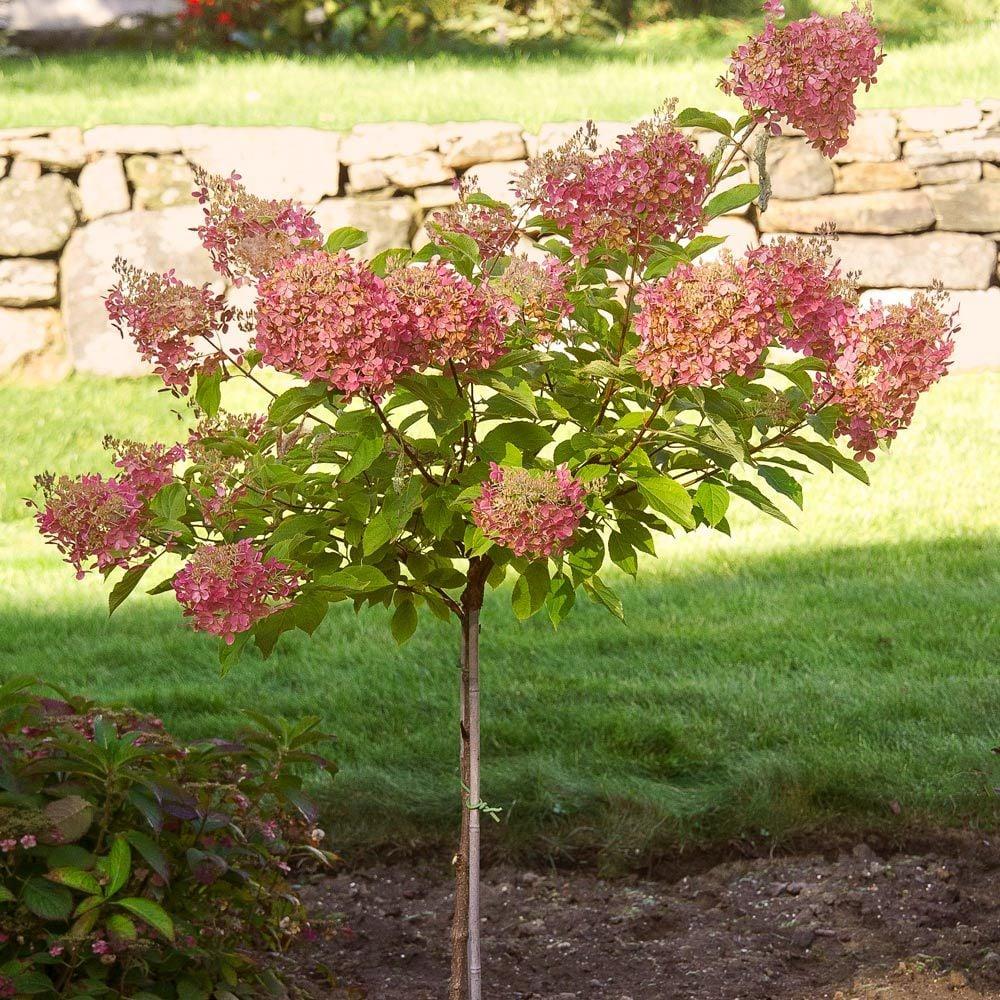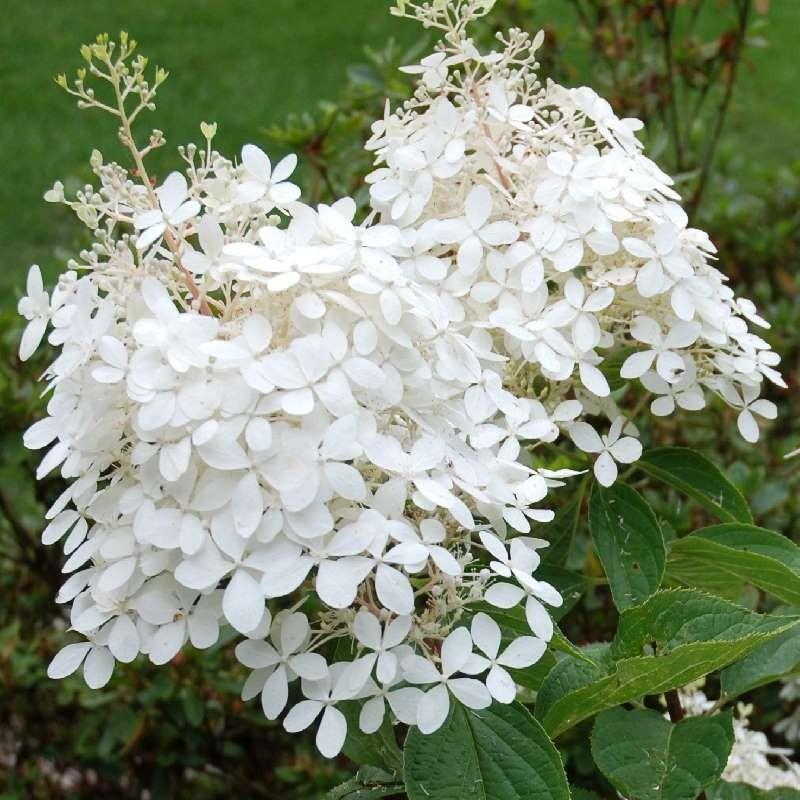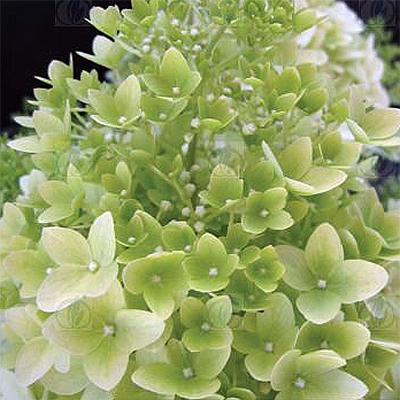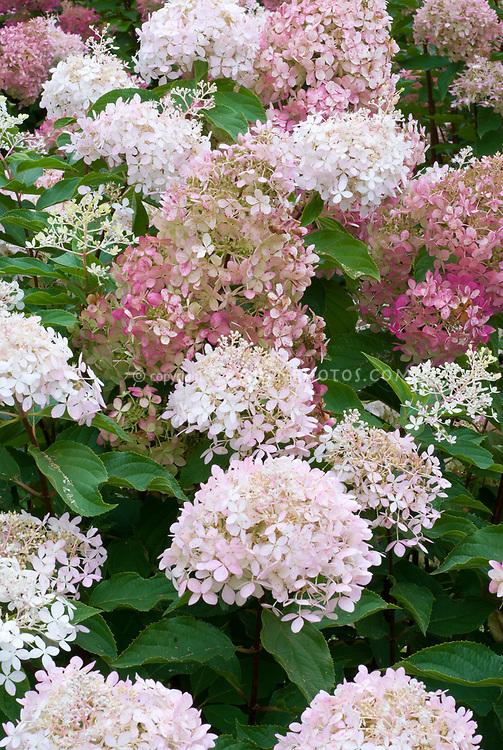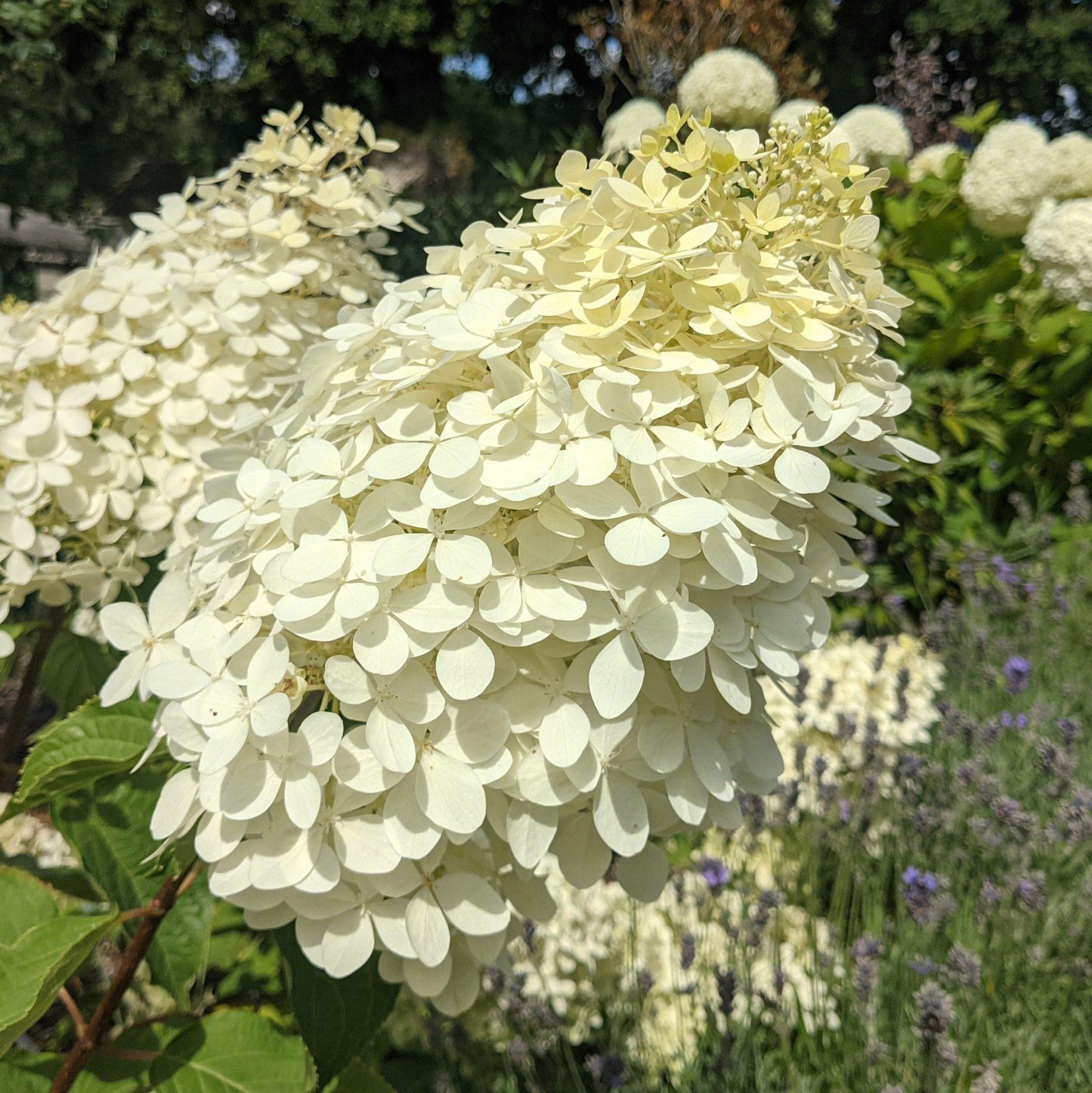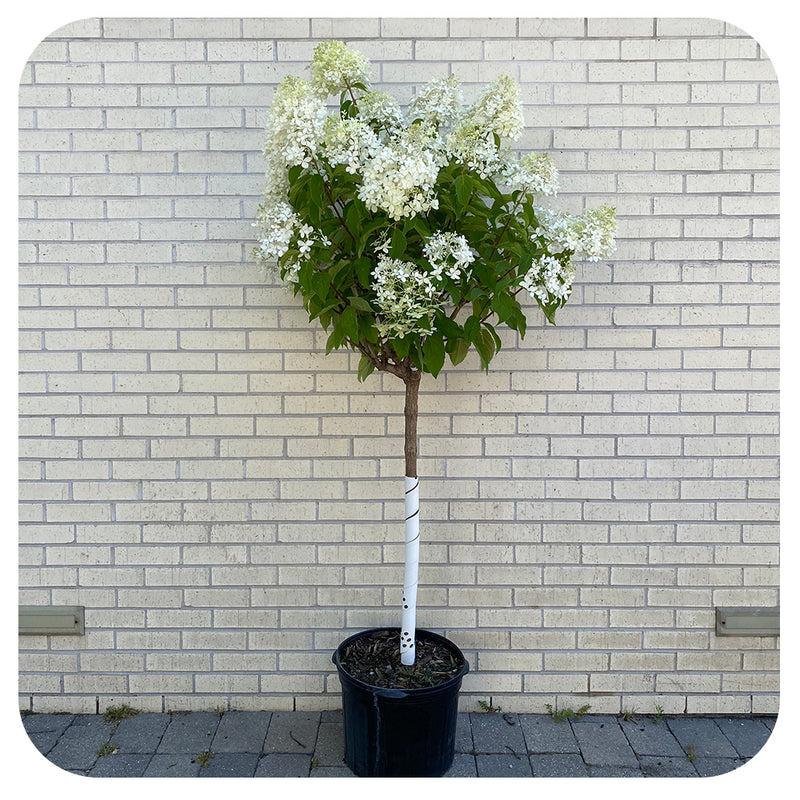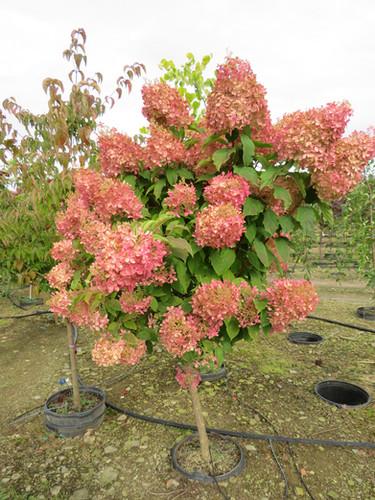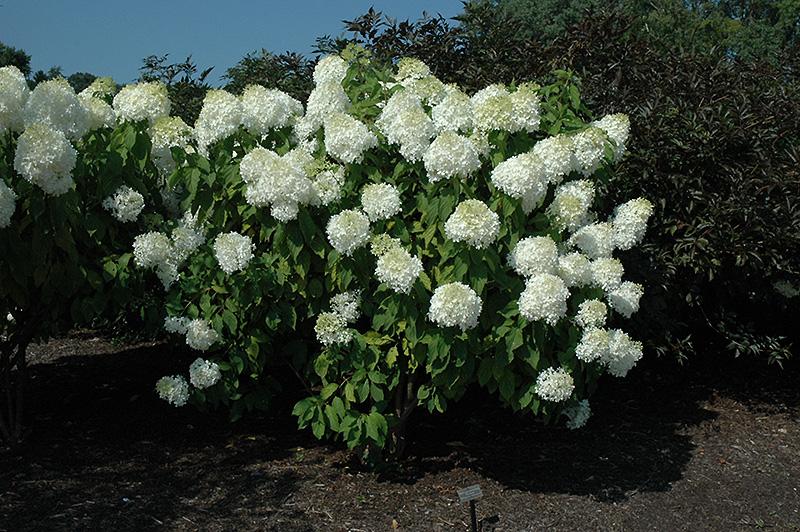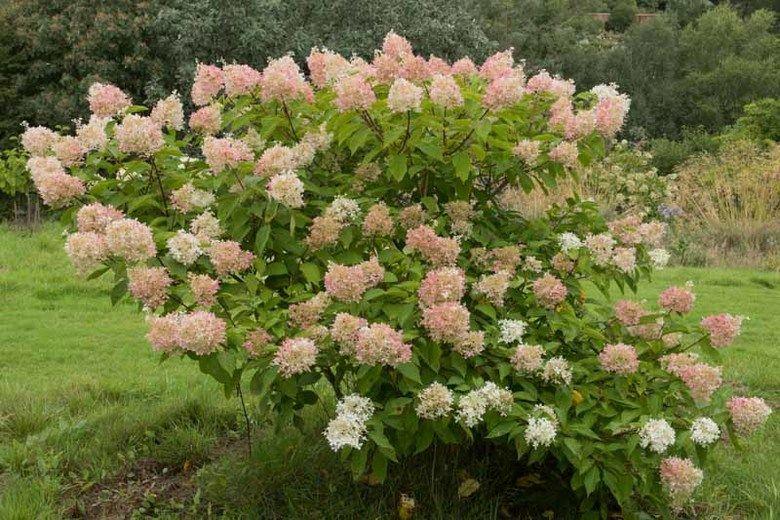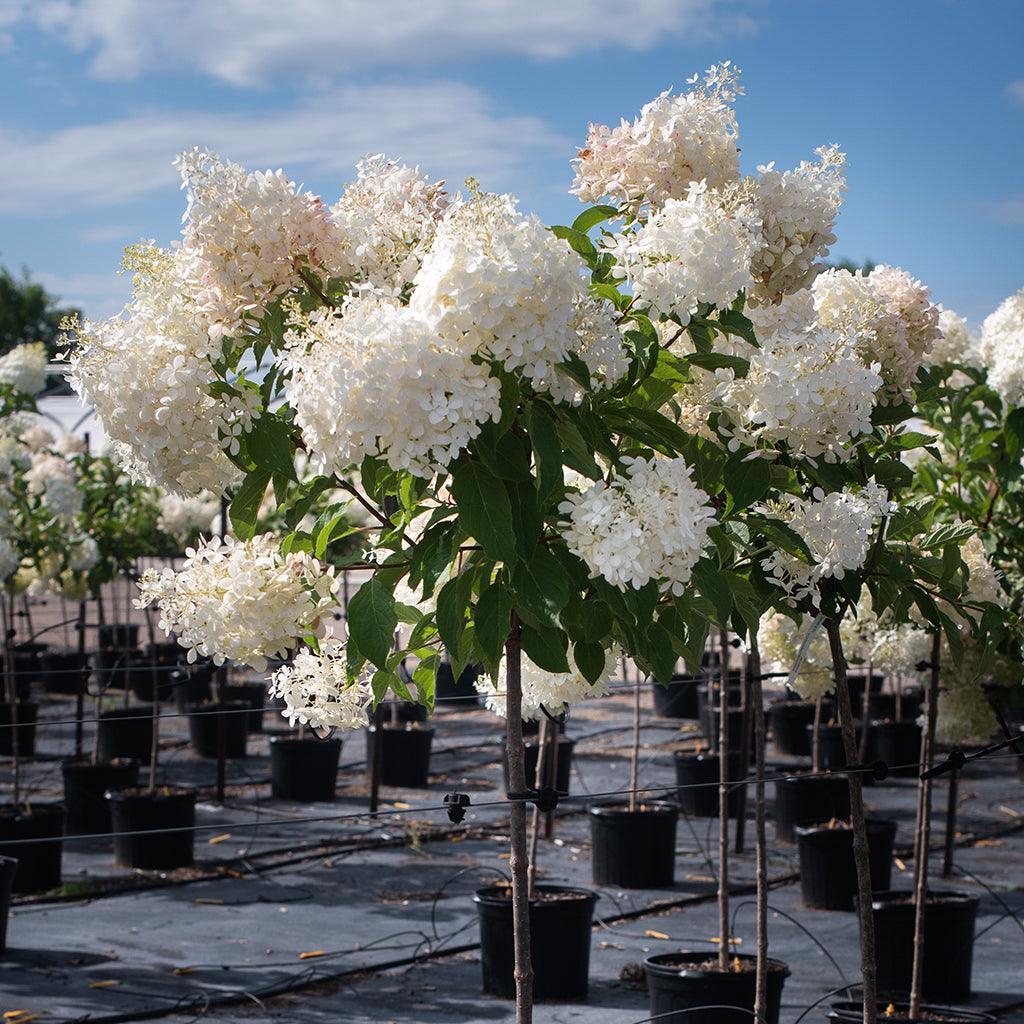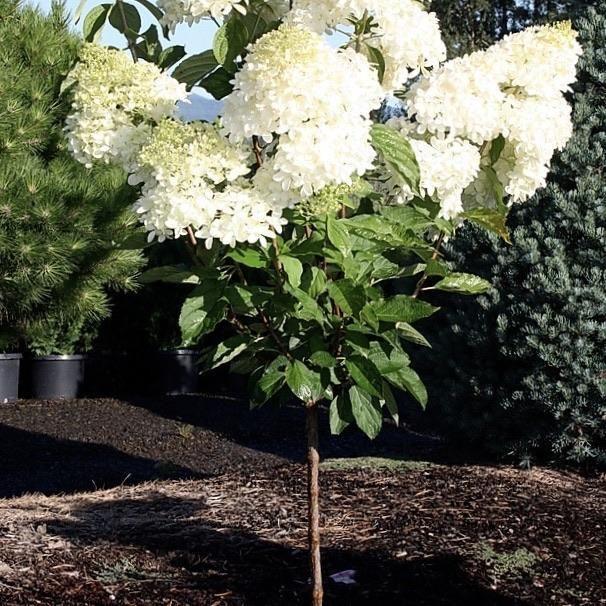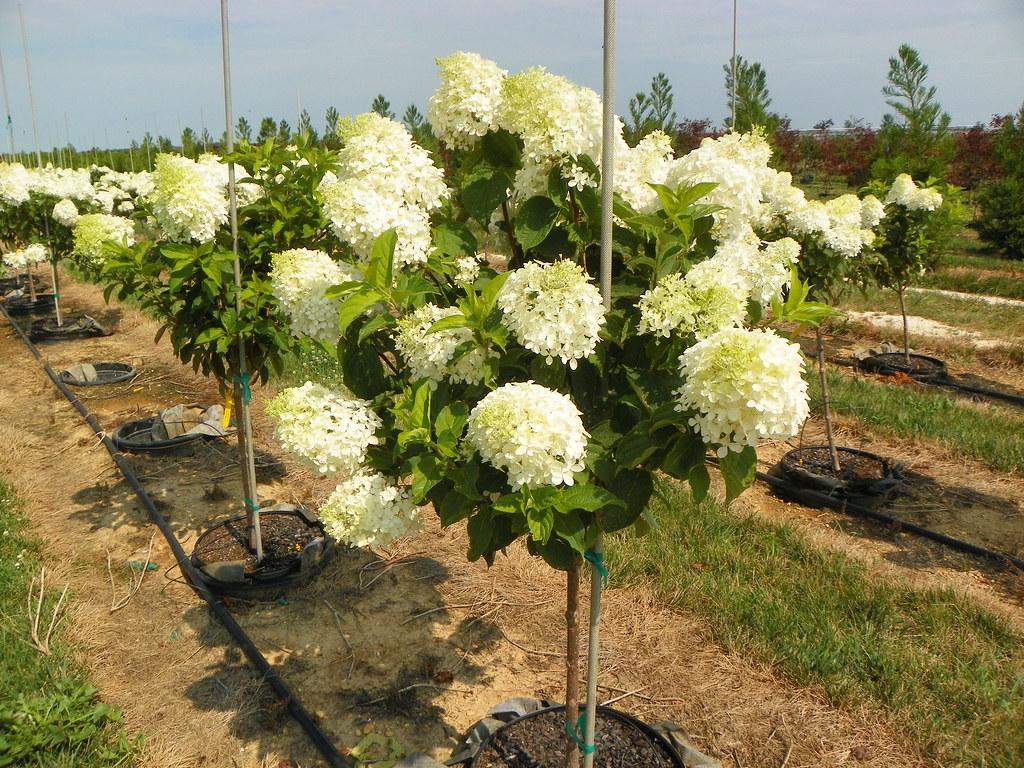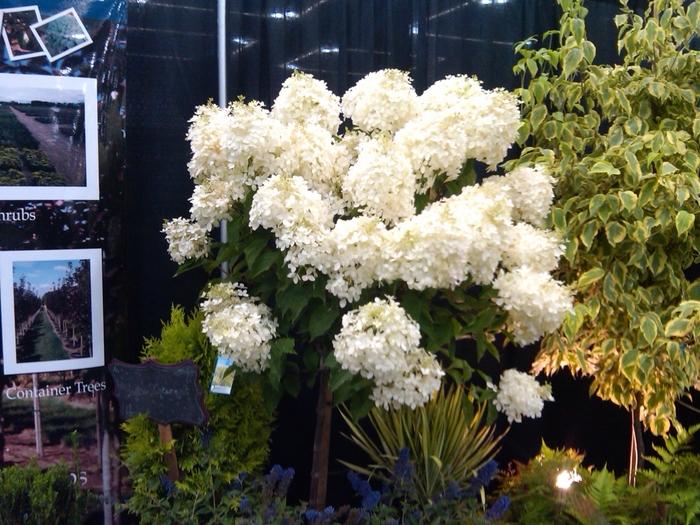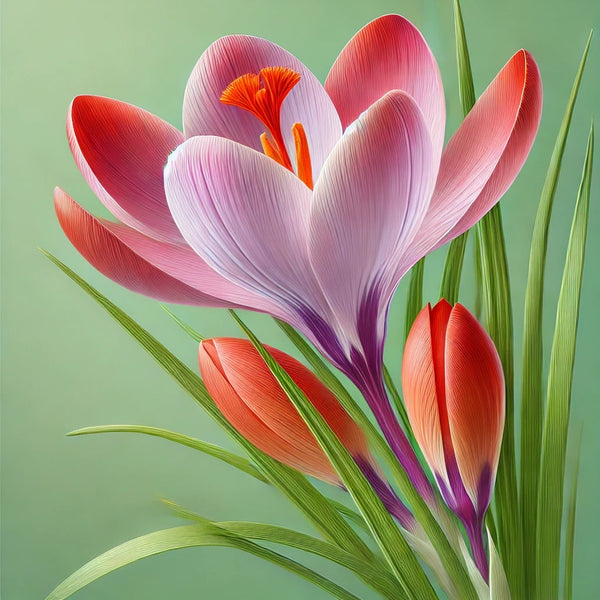1
/
of
18
Phantom Panicle Hydrangea Tree Form–Ornamental Focal Point 7/8' h B&B
Phantom Panicle Hydrangea Tree Form–Ornamental Focal Point 7/8' h B&B
Regular price
$2,140.00 USD
Regular price
$2,782.00 USD
Sale price
$2,140.00 USD
Unit price
/
per
Shipping calculated at checkout.
SKU:nsf7214-redcrocus
Couldn't load pickup availability
Hydrangea paniculata 'Phantom' Tree Form
Description
The Hydrangea paniculata 'Phantom' Tree Form is a stunning ornamental tree known for its large, conical flower clusters that transition from creamy white to a soft pink as they mature. This tree form provides a unique architectural element to gardens and landscapes.
Suggested Uses
Ideal for use as a focal point in garden beds, borders, or as a standalone specimen. It is also suitable for container gardening on patios or decks.
Plant Details
-
 Botanical Name: Hydrangea paniculata 'Phantom' Tree Form
Botanical Name: Hydrangea paniculata 'Phantom' Tree Form -
 Common Name: 'Phantom' Panicle Hydrangea Tree Form
Common Name: 'Phantom' Panicle Hydrangea Tree Form -
 Size & Growth: Reaches 6-8 feet in height and 4-6 feet in width
Size & Growth: Reaches 6-8 feet in height and 4-6 feet in width -
 Hardiness Zones: 3-8
Hardiness Zones: 3-8 -
 Foliage Type: Deciduous
Foliage Type: Deciduous -
 Bloom Time: Mid-summer to fall
Bloom Time: Mid-summer to fall -
 Growth Rate: Moderate
Growth Rate: Moderate -
 Light Requirements: Full sun to partial shade
Light Requirements: Full sun to partial shade -
 Attracts Pollinators: Yes
Attracts Pollinators: Yes -
 Indoor Friendly: No
Indoor Friendly: No -
 Container Friendly: Yes
Container Friendly: Yes -
 Deer Resistant: No
Deer Resistant: No -
 Pet Warning: Non-toxic to pets
Pet Warning: Non-toxic to pets -
 Fragrant: No
Fragrant: No -
 Cut Flower: Yes
Cut Flower: Yes -
 Grows Well With: Roses, Lavender, Ornamental Grasses
Grows Well With: Roses, Lavender, Ornamental Grasses
Care Tips
-
 Planting Instructions: Plant in well-drained soil, ensuring the root ball is level with the soil surface.
Planting Instructions: Plant in well-drained soil, ensuring the root ball is level with the soil surface. -
 Soil Moisture: Keep soil consistently moist, but not waterlogged.
Soil Moisture: Keep soil consistently moist, but not waterlogged. -
 Soil Type: Prefers rich, loamy soil.
Soil Type: Prefers rich, loamy soil. -
 Humidity: Tolerates average humidity levels.
Humidity: Tolerates average humidity levels. -
 Pruning Instructions: Prune in late winter or early spring to maintain shape and encourage new growth.
Pruning Instructions: Prune in late winter or early spring to maintain shape and encourage new growth. -
 Winter Care: Mulch around the base to protect roots in colder climates.
Winter Care: Mulch around the base to protect roots in colder climates. -
 Planting Depth: Plant at the same depth as it was in the container.
Planting Depth: Plant at the same depth as it was in the container. -
 Fertilization: Fertilize in early spring with a balanced fertilizer.
Fertilization: Fertilize in early spring with a balanced fertilizer. -
 Special Care: Avoid overhead watering to prevent fungal diseases.
Special Care: Avoid overhead watering to prevent fungal diseases.
Share
